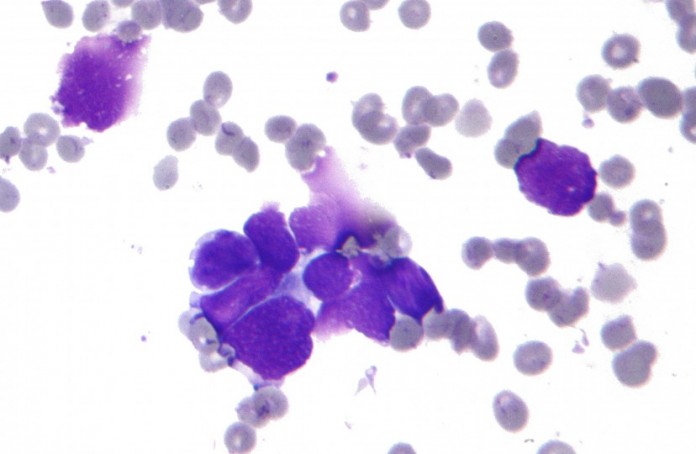Cancer: It’s a diagnosis you never want hear, and yet it’s certainly possible. According to the National Cancer Institute, approximately 40.8 percent of men and women will be diagnosed with cancer at some point of their life. Today, there are more than 14 million people living with cancer in the United States.
One of the most common questions asked after a patient learns they have cancer is how fast will it spread. It’s important to know that there are many factors to consider when determining how quickly cancer cells will replicate and metastasize to other parts of the body. Some cancers, including pancreatic and ovarian cancers, can spread quickly. While others, including some skin cancers can spread slower.
Certain influencers can help determine how fast cancer may spread, including the size (bulk) of the tumor, microscopic appearance of the cells (they are graded and classified by the pathololgist), location of the tumor, and how the tumor responds to treatment – often various combinations of radiation, surgery, and chemotherapy. In the case of breast cancer, normally healthy chemicals including estrogen, progesterone, and the HER2/nue gene can also accelerate the tumor’s growth, making it difficult to gauge how quickly breast cancer can spread.
How Cancer Grows
To understand how fast a cancer may grow, it’s helpful to know how it spreads in the first place. Almost all cancers can indeed move to other parts of the body and become metastatic tumors. Many will metastasize to other parts of the body in a common pattern. For example, breast cancer typically spreads from the breast to the bone, brain, liver and the lungs. While lung cancer moves to the adrenal glands, bone, brain, liver and the other lung.
Below is the typical progression of a malignant tumor, as outlined by cancer.gov.
Local Invasion. Cancer cells invade nearby normal tissue.
Intravasation. They then invade and move through the walls of nearby lymph vessels or blood vessels.
Circulation. The cells will eventually move through the lymphatic system and the bloodstream to other parts of the body.
Arrest and Extravasation. Cancer cells then stop moving in capillaries at a distant location and invade the walls of the capillaries to migrate into the surrounding tissue.
Proliferation. The cells multiply at the distant location to form small tumors known as micrometastases.
Angiogenesis. Micrometastases stimulate the growth of new blood vessels to obtain a blood supply.
Top 5 Fast Spreading Cancers
Pancreatic. If you’re experiencing back pain, digestive problems, and weight loss, see your doctor quickly. These are all symptoms of pancreatic cancer, a difficult cancer to diagnose because it is often symptomless until it reaches later stages.
Brain. About 50% of people with brain cancer report having bad headaches. Other symptoms include blurred vision, nausea, and poor balance. Brain cancer risk increases after the age of 50. Avoid MRIs and CAT scans when possible, as too many can increase your chances of brain cancer.
Esophageal. Diets high in acid have been linked to this fast spreading cancer. If you’re experiencing difficulty swallowing, hiccups, and weight loss, see your doctor.
Liver. Like pancreatic cancer, malignant tumors in the liver are often found after they’ve metastasized. Only 10% of people diagnosed with liver cancer live five years after the cancer has been discovered. Liver cancer signs include jaundice, fatigue, pain in your right side or right shoulder, and weight loss. Obesity and heavy alcohol use put us at increased risk for liver cancer.
Melanoma. This fast growing skin cancer can be deadly if untreated. Symptoms of melanoma include unusual moles and other skin growths. Those with fair skin, light hair and eyes, and those who sunburned easily as children are at higher risk.
To lower your risk of cancer so that you may never need to ask the tough questions like how fast your cancer can spread, follow some simple, daily guidelines including limiting your intake of refined sugars and alcohol, avoiding tobacco, eating a plant-based diet, exercising regularly, and watching your weight.
Physical examinations by your physician, along with preventive screening as recommended by your physician, are extremely important. Talk with your doctor about your family history to find even more ways to stay cancer-free.
Here’s the good news…. Over the years, I have found that cancer risk can be reduced by over 75%.
In the very near future, I will be discussing easy ways to reduce the risk of cancer by over 75%. Please stay tuned!
—









I love your reports and again shouldn’t we be being proactive instead of reactive against cancer and it’s incidence. Are we just keeping the pharmaceutical industry rich?
Hi Sue,
Thank you for your kind words!
I agree. As a society, we need to be more proactive.
Dr. Maxwell